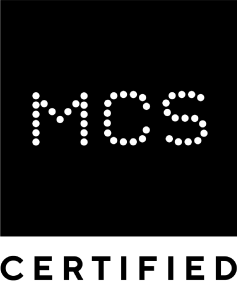
From 1st Feb, 2024, the UK will see VAT on 100s of energy saving products, including batteries, water heaters and EV chargers, reduced to 0%!
VAT is the tax we add to ‘luxury’ goods here in the UK, and was raised to 20% by the current government in their first ever budget in 2010.
Since then, and to be fair for years before, there has been some debate on what ‘luxury’ goods should include.
Sanitary items, parts of hospitality services and tourism have all been given their own rates and exemptions over the last few years due to various groups campaigning for reductions.
One of the most successful lobby groups has been the renewable energy sector.
Tax cuts can be a great way of reducing cost and encouraging people to adopt certain lifestyles and products – and we all need the country to be a little greener.
The first concession was to reduce VAT to 0% on Solar Panels, inverters and anything involved in the installation of a full solar energy system in April 2022.
This was a real boost to the industry, with a huge rise in the installation of Solar PV systems during the following months.
SEGs and the Solar revolution
Once the solar energy revolution got under way the energy suppliers realised there was an advantage to people producing their own electricity – they could boost their green credentials by buying that electricity and selling it on to other customers.
Initially this was through the FiT, Feed in Tariff, scheme and allowed customers to claim for half of the electricity they produced whether they used it of not.
Good for the customer but not so good for the companies themselves, as the rate set for this green energy was impossibly high.
Over the years, companies lobbied to have these rates reduced as it was costing them too much to buy energy from domestic sources.
Eventually the rates were reduced so much it made no sense to even sign up for a FiT and, after much toing and froing, SEGs were introduced.
The SEG, or Smart Export Guarantee, was rolled out across the country, with energy providers given the responsibility of setting the rates.
This resulted in some pretty poor export rates to start with, but all that changed when both energy providers, and the grid companies, realised that they could start to manage their electricity much better with help from domestic energy generators … or, more accurately, domestic energy storers (is that a word?).

Remember Economy 7?
Economy 7 is a low-rate electricity tariff that is exclusively available at night:
‘A off-peak tariff known as the ‘Economy 7’ was introduced in October [1978]. It featured a seven-hour night rate, some 20 per cent cheaper than most night-time tariffs, made possible by economies in the night-time operation of the system.’
A cheaper night-time rate was very attractive to people who were installing the new ‘storage’ heaters that would heat huge blocks of concrete up during the night with households using that heat during the day.
But why would electricity be cheaper at night? Surely it costs the same to produce as it does during the day?
Well, that is true but, while people don’t use as much electricity from midnight to around 6am here in the UK, the power stations are still producing a huge amount of energy.
So, why don’t they just turn the power stations off?
Well, they can’t, it just costs too much.
Imagine turning a coal fired power station off at 12am, then having to relight all the furnaces and re-calibrate the equipment to get it online for the 6am surge!
That’s just not practical, so the grid keeps pumping out the power and pays energy suppliers to take that energy off them.

Why SEGs work for you and the Energy Supplier
This is where the SEGs come in – and why they are also encouraging the upsurge in battery storage and battery only installs.
Most company’s SEGs offer a reduced rate during the night, often a fraction of their peak time charges.
Your battery storage is very helpful to energy companies, as they can send the excess energy the grid produces to your batteries, charging you a nominal amount and reducing what you use from the grid during peak times.

0% VAT
Obviously, battery storage works well for everyone – energy providers, grid companies and customers alike.
So, to encourage more of this joined kind of thinking, VAT has been reduced on batteries – and other renewable energy products.
Whether you are retro fitting storage to your existing system, fitting a battery only system, or even just buying a solar battery, you’ll be getting a 20% discount.

And it’s not just batteries!
Batteries aren’t the only way of fully utilising SEGs or solar energy systems.
EV Chargers, Immersion Diverters (for heating water in an emersion tank) and heat pumps are all part of the new regulations.
The full list, released when the announcement was made in April 2023 is:
- electrical battery storage
- water-source heat pumps
- diverters retrofitted to ESMs such as solar panels and wind turbines
And the Government responded to that by releasing this list of the proposed technologies:
- blinds, shutters and awnings
- district heating
- diverters
- EV charging points
- heat interface units
- heat pump crates/covers
- high recovery hot water cylinders
- home energy management systems
- hybrid heat pumps
- insulation protection
- LED low voltage lighting
- low embodied carbon insulation
- mechanical and non-mechanical ventilation
- microgeneration units
- non-residential solar panels
- radiant and infrared lighting
- small scale flywheel
- supercapacitors
- thermal-driven heat pumps
- thermal storage
- thermostatic radiator valves
- voltage optimisers
- water efficiency products
- water-source heat pumps
- wet retrofit underfloor heating insulation
- windows, doors and rooflights
And these ‘Other issues’:
- extend the relief to a wider range of buildings
- extend the relief to ESMs purchased directly from retailers and then self-installed
- extend the relief to upgrades, repairs, and maintenance of ESMs that have already been installed
- take a ‘fabric first’ approach by incentivising maximising the performance of materials that make up the building fabric itself before incentivising the installation of ESMs
- mandate passthrough of this VAT relief from suppliers to consumers
- extend the relief to materials used for the installation of a qualifying ESM, such as scaffolding
- extend the relief to all ESMs to ensure the list of qualifying technologies never becomes outdated
When does the 0% VAT relief on ESMs end?
The legislation on the 0% VAT relief on ESMs (Energy Saving Measures) contains what is called a Sunset Clause – meaning the government is flagging up an end to the policy.
At the moment that is set for April 2027
‘… due to expire on 31 March 2027, at which point the installation of technologies within scope of this relief (including those that are added to the relief following this CfE) will revert to the reduced rate of VAT at 5%.’
But 3 years is a long time in politics, so there’s a fair chance that this will change.
For more information of the Energy Saving Measures VAT relief, visit the government website here.







